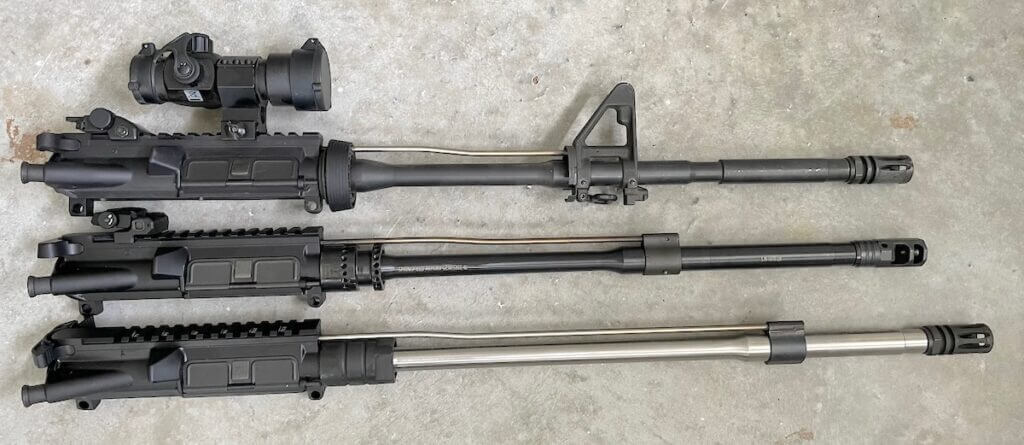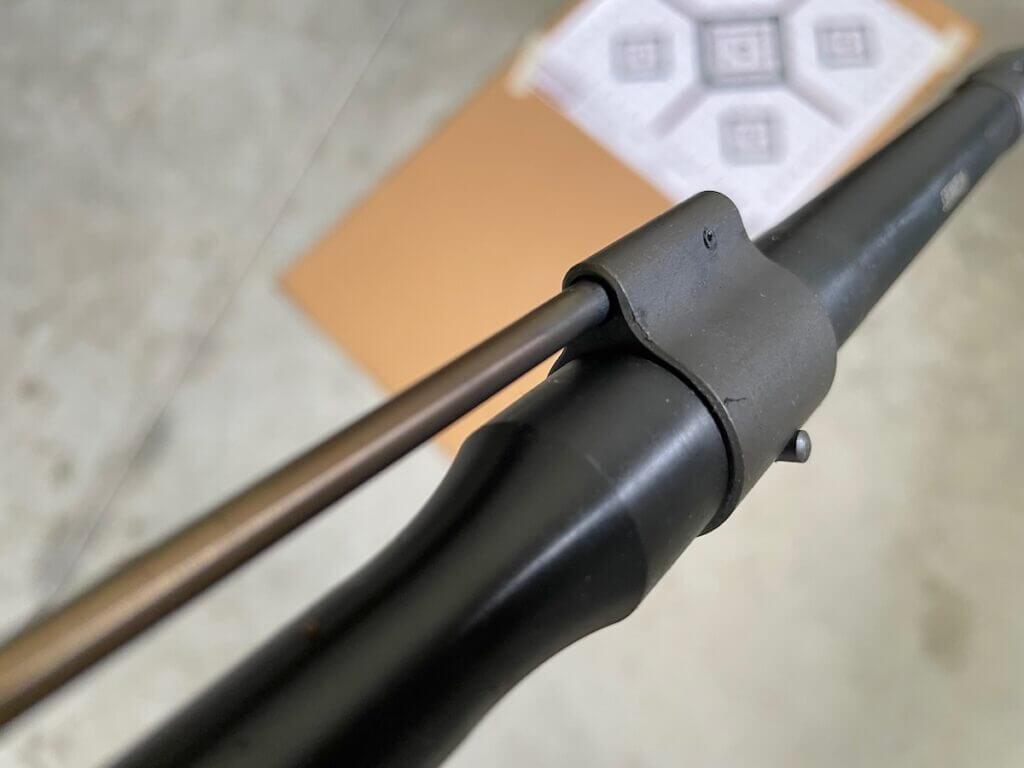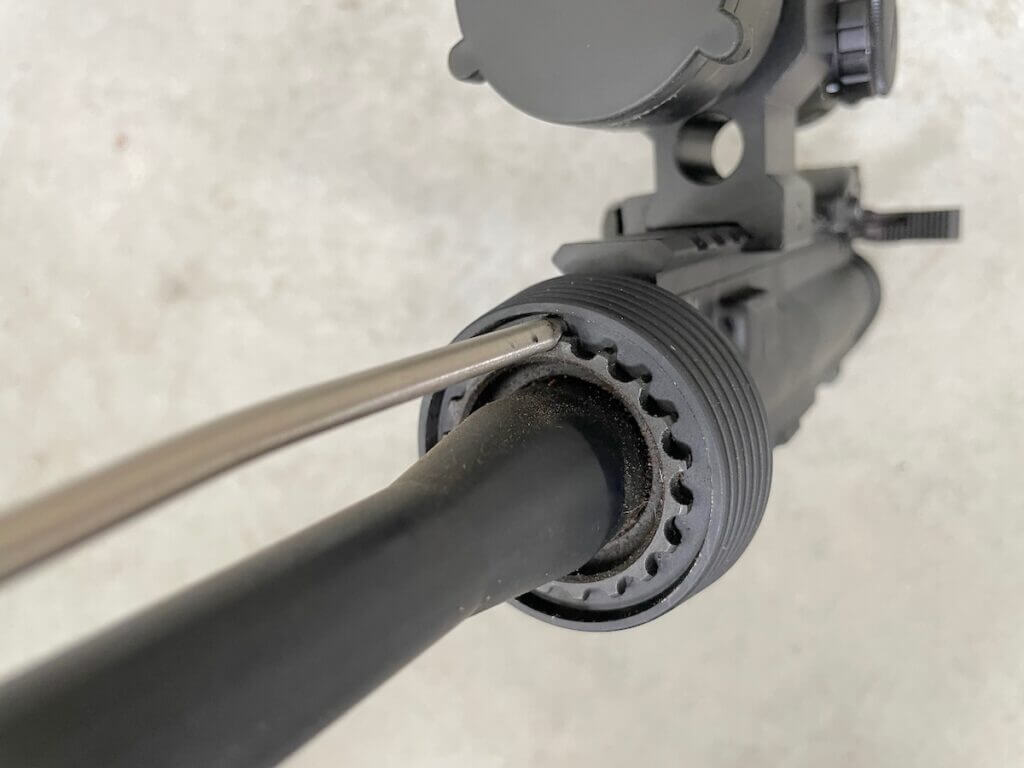
Estimated reading time: 5 minutes
So what exactly is a mid-length gas system? It could be considered the sweet spot length for civilian AR-15 guns with 16-inch barrels. Many commercial AR-15 manufacturers use a mid-length gas system on their guns because it provides optimal performance. A mid-length system also offers less recoil while making the gun function more reliably. I’ll get into more detail in a moment, but let’s get into the lengths on an AR-15 and how they work.
Table of contents
How Does An AR-15 Gas System Work?

An AR-15 gas system works by porting burning gas from the barrel just before it reaches the muzzle. It goes through a gas block redirecting the burning gases down a gas tube toward the bolt carrier group (BCG). The gas tube lines up with the gas key on the BCG inside the upper receiver, and when that surge of burning gas reaches the gas key it slams the BCG backward to cycle the AR, ejecting the empty cartridge case, and cocking the hammer.
The buffer tube assembly then pushes the BCG forward chambering a round. A few other things are happening inside the lower receiver. It depends on if it is semi-auto or select fire, but that’s for another story. The cycle happens so fast you can barely see the BCG moving. Not all AR-15 gas systems use the same length gas tube.

Types For AR-15
Most AR-15 gas systems are categorized as either a pistol, carbine, mid, or rifle length. It is directly related to the barrel length of the AR-15. Back in the day, the M16 was originally built with a 20-inch barrel and a rifle-length gas system. This setup produced a very smooth cycling rifle, but warfare evolved and a shorter more compact role was needed. Also back in the day, the CAR-15 was developed with a 10-inch barrel and a new, shorter carbine system. The current M4 is equipped with a 14.5-inch barrel and uses a carbine-length gas system.

AR-15 Gas Systems Vs Barrel Length
The length of the gas system is directly related to the length of the barrel because of dwell time or the amount of time that the gases from a fired bullet engage the BCG.
The shorter the barrel the shorter the dwell time. The engineering problem is to balance dwell time so the rifle doesn’t get battered due to too much gas and to reduce excessive recoil. If there is not enough gas the AR-15 will jam and will not cycle properly. This produces Failure To Feed (FTF) or Failure To Eject (FTE) jams.
AR-15 Mid-Length Sweet Spot
AR-15 pistols with a barrel less than 10.5 inches use a pistol-length gas system which is about 4.5 inches. An AR-15 with a barrel 10.5 to 18 inches in length can use a carbine-length one that is about 7 inches long. The 9-inch mid-length systems are for AR-15s with a 14-to-20 barrel. A rifle-length system is for a barrel 20 inches or longer and it is about 12 inches long.

While the carbine-length gas system works well, it does provide a snappier recoil than one that is rifle-length. The mid-length was developed to provide that sweet spot of less recoil and optimal reliability. It also reduces the wear and tear on the rifle so parts last longer. Compared to the carbine length, the mid-length optimizes dwell time so the rifle cycles better.

READ MORE: Why Changing Out Your AR15 Charging Handle Is A Good Idea
Since commercial AR-15 carbines are required to have a minimum barrel length of 16 inches, they are built mid-length because of the added benefits.
The Best AR-15 Gas System
There is no best AR-15 gas system since the system and barrel length have a type of symbiotic relationship where they exist together in a way that benefits all.

*** Buy and Sell on GunsAmerica! ***


Minor quibble: the redirected gas does not “slam the BCG backwards.” It is fed by the gas key into a sealed expansion chamber inside the BCG, that is formed by the BCG and tail of the bolt. The expanding gases being fed into that chamber forces the rearward motion of the BCG, just like in the piston cylinder of a car engine.
“when that surge of burning gas reaches the gas key it slams the BCG backward to cycle the AR.”
This is a poor description of operation that doesn’t help readers understand how an AR actually functions. I recommend you reading Stoner’s patent as it provides a clear explanation of how an AR expanding gas system operates: https://patents.google.com/patent/US2951424
Otherwise, Wikipedia is works, too:
https://en.m.wikipedia.org/wiki/Eugene_Stoner#:~:text=In%20U.S.%20patent%202%2C951%2C424%2C%20the,chamber%20inside%20the%20bolt%20carrier.
In U.S. patent 2,951,424, the designer states: ″This invention is a true expanding gas system instead of the conventional impinging gas system.″ Gas is routed from a port in the barrel through a gas tube, directly to a chamber inside the bolt carrier. The bolt within the bolt carrier is fitted with piston rings to contain the gas. In effect, the bolt and carrier act as a gas piston and cylinder. The subtleties involved in ArmaLite’s patent on the gas system significantly diverge from classical direct impingement; upon firing, the pressurized propellant gasses exit the barrel via the gas port and travel the length of the gas tube, but instead of simply applying the inertia necessary to cycle the weapon directly to the bolt carrier, the gas is funneled inside the bolt carrier wherein the increase in pressure results in the bolt itself acting as a piston, forcing the bolt carrier away from the barrel face.